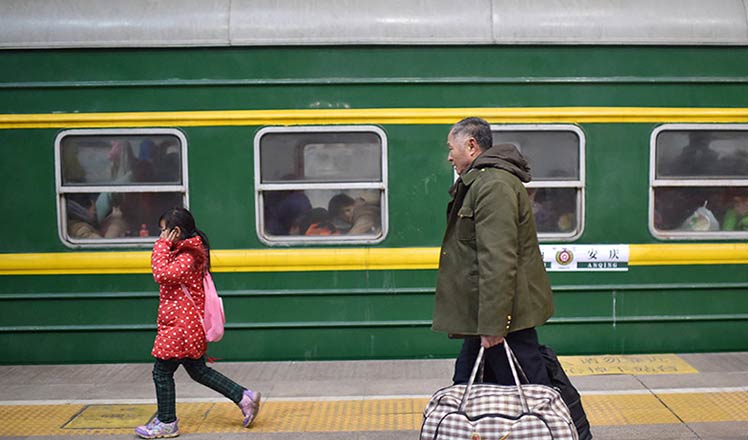China needs supply-side reforms to boost potential growth
Updated: 2016-01-20 13:43
By Wu Zheyu(chinadaily.com.cn)
|
||||||||
CD: Could you give some suggestions on dealing with unemployment caused by reduced capacity in industry and economic adjustments?
M: Industrial restructuring usually takes a long period of time but China has gotten used to rapid change whenever it comes to the economic structure or development. To face the challenge, the most important thing is to focus on increasing the training, including professional skills in or outside the company. If a person works in an industry with a not very promising future, for example, industries suffering from excess capacity, then those employees should be provided more training, first of all in basic skills to increase their ability to learn new skills then technical skills to enhance their employability. And the authorities should put more effort to improving training all over one’s working life. This should begin early, because, if layoffs become large scale, it would cost more to respond and adjust. The training development could start with a market-oriented selection of the skills to be taught so as to also reduce skills mismatches in the labor market.
CD: How do you evaluate China’s economic development and its future?
M: We believe that it is not impossible for China’s GDP growth to reach 7 percent given the healthy situation of public finances but it is another question whether it is desirable. It is a natural process for the economy to slow as its population ages and stimulus policies would only delay the adjustment while building up imbalances. So, assuming that the government will increase its structural reforms and come up with more policies to encourage innovation, we predict that its GDP growth could reach over 6 percent in 2 years ahead. We believe that its economy will be on the right track if can stick to supply-side reforms instead of using stimulus measures.
CD: Do you have any suggestions to our current supply-side reforms?
M: First, the authorities could expand the scope of the reforms, instead of small steps, reforming on many fronts simultaneously, for example addressing the issues of aging, simplification of business procedures, upgrading skills and tackling the problem of industrial over-capacity in an effective way. Adopting structural reforms becomes more urgent as the economy slows.
Second, allow the market to play a greater role.
Last but not least, it’s important enhance Chinese people’s basic skills, including financial literacy to make better decisions. For instance, to judge whether currency is weakening or strengthening in general, it is more useful to look at the effective exchange rate, started to be published regularly by the People’s bank of China, instead of looking at only the bilateral rates.
The OECD uses its wealth of country experiences and data on a broad range of topics to help governments grow and prosper and fight poverty through economic growth and financial stability.
- A glimpse of Spring Rush: little migrant birds on the way home
- Policy puts focus on genuine artistic students
- Police unravel market where babies are bought, sold as commodities
- More older pregnant women expected
- Netizen backlash 'ugly' Spring Festival Gala mascot
- China builds Mongolian language corpus
- Special envoy to visit Laos and Vietnam
- El Nino expected to wreak havoc in S. America well into 2016
- Police officer rescues frightened sloth at corner of busy highway
- US Secretary of State visits Laos, aiming to boost ties
- 2 Chinese nationals killed, 1 injured in suspected bomb attack in Laos
- New York, Washington clean up after fatal blizzard

 Creation of China Daily's Tibetan-style font
Creation of China Daily's Tibetan-style font
 Drone makers see soaring growth but dark clouds circle industry
Drone makers see soaring growth but dark clouds circle industry China's Zhang reaches Australian Open quarterfinals
China's Zhang reaches Australian Open quarterfinals
 Spring Festival in the eyes of Chinese painters
Spring Festival in the eyes of Chinese painters
 Cold snap brings joy and beauty to south China
Cold snap brings joy and beauty to south China
 First trains of Spring Festival travel depart around China
First trains of Spring Festival travel depart around China
 Dough figurines of Monkey King welcome the New Year
Dough figurines of Monkey King welcome the New Year
 Ning Zetao, Liu Hong named China's athletes of the year
Ning Zetao, Liu Hong named China's athletes of the year
Most Viewed
Editor's Picks

|

|

|

|

|

|
Today's Top News
National Art Museum showing 400 puppets in new exhibition
Finest Chinese porcelains expected to fetch over $28 million
Monkey portraits by Chinese ink painting masters
Beijing's movie fans in for new experience
Obama to deliver final State of the Union speech
Shooting rampage at US social services agency leaves 14 dead
Chinese bargain hunters are changing the retail game
Chinese president arrives in Turkey for G20 summit
US Weekly

|

|








